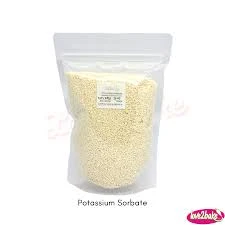
isopropyl 99.9
Exploring Isopropyl Alcohol The Versatile Hydrocarbon
Isopropyl alcohol, commonly known as rubbing alcohol, is a colorless, flammable chemical compound with the molecular formula C3H8O. It is an isomer of propyl alcohol and is often used in various industries and households due to its versatile properties. The compound is synthesized through the hydration of propylene, a byproduct of oil refining, and it is found in a variety of concentrations, the most common being 70% and 99.9%.
Chemical Structure and Properties
Isopropyl alcohol features a branched structure, making it a secondary alcohol. Its molecular structure consists of three carbon atoms, with the hydroxyl group (-OH) attached to the second carbon. This configuration gives isopropyl alcohol its unique properties, which include a high volatility and low toxicity compared to other alcohols, making it suitable for numerous applications.
The compound has a relatively low boiling point of 82.6°C and a flash point of 11.7°C, which underscores its flammability. However, when used and stored properly, isopropyl alcohol can be a safe and effective substance for various uses, primarily due to its antimicrobial properties.
Common Uses of Isopropyl Alcohol
One of the most popular uses of isopropyl alcohol is as a disinfectant. In healthcare settings, 70% isopropyl alcohol solutions are commonly employed to sterilize tools and surfaces, as this concentration effectively disrupts bacterial cell membranes. The higher concentration of 99.9% isopropyl alcohol is often used for cleaning electronics, as it evaporates quickly without leaving residue.
In the beauty industry, isopropyl alcohol is frequently utilized as an astringent in skin care products and as an ingredient in hand sanitizers. Its ability to kill germs and bacteria while drying quickly is essential in maintaining hygiene and preventing infections.
isopropyl 99.9

In addition to its role as a disinfectant, isopropyl alcohol is also used as a solvent in industrial settings. It serves as a carrier for paints, coatings, and other chemicals, facilitating the smooth application and enhancing the drying process. Additionally, isopropyl alcohol is a component in antifreeze solutions and is utilized for cleaning and degreasing mechanical parts in automotive and manufacturing industries.
Safety Precautions
Despite its widespread applications, isopropyl alcohol must be handled with care. It is important to use it in a well-ventilated area to avoid inhalation of fumes, which can cause respiratory irritation. Protective gear such as gloves and goggles are recommended, especially when using higher concentrations. Moreover, due to its flammability, it should be kept away from open flames and high heat sources.
Environmental Impact
Isopropyl alcohol is often seen as a favorable alternative to more hazardous solvents, highlighting its relatively low environmental impact. It is biodegradable and breaks down into harmless substances when properly disposed of. However, the overuse and improper disposal of isopropyl alcohol can still contribute to environmental concerns, urging the need for responsible consumption and disposal practices.
Conclusion
Isopropyl alcohol, especially in its 99.9% concentration, is a remarkable chemical compound with a diverse range of applications across various fields. From its primary function as a disinfectant to its industrial uses as a solvent, isopropyl alcohol proves to be an invaluable tool. As we navigate through the complexities of hygiene and environmental responsibility, understanding and leveraging the properties of isopropyl alcohol can significantly contribute to enhancing safety and effectiveness in both domestic and industrial settings. With the proper precautions and informed usage, isopropyl alcohol remains an essential and versatile compound in today’s world.
-
Pure Sodium Dichloroisocyanurate Dihydrate | Powerful DisinfectantNewsAug.29,2025
-
Industrial Chemicals: Quality & Purity for Every IndustryNewsAug.28,2025
-
Nitrile Rubber Honoring Strict Production StandardsNewsAug.22,2025
-
Aspartame Ingredients Honoring Food Safety ValuesNewsAug.22,2025
-
Fertilizer for Balanced Plant NutritionNewsAug.22,2025
-
Cyanide Gold Processing with High Purity AdditivesNewsAug.22,2025
-
Formic Acid in Textile Dyeing ApplicationsNewsAug.22,2025
Hebei Tenger Chemical Technology Co., Ltd. focuses on the chemical industry and is committed to the export service of chemical raw materials.
-

view more DiethanolisopropanolamineIn the ever-growing field of chemical solutions, diethanolisopropanolamine (DEIPA) stands out as a versatile and important compound. Due to its unique chemical structure and properties, DEIPA is of interest to various industries including construction, personal care, and agriculture. -

view more TriisopropanolamineTriisopropanolamine (TIPA) alkanol amine substance, is a kind of alcohol amine compound with amino and alcohol hydroxyl, and because of its molecules contains both amino and hydroxyl. -

view more Tetramethyl Thiuram DisulfideTetramethyl thiuram disulfide, also known as TMTD, is a white to light-yellow powder with a distinct sulfur-like odor. It is soluble in organic solvents such as benzene, acetone, and ethyl acetate, making it highly versatile for use in different formulations. TMTD is known for its excellent vulcanization acceleration properties, which makes it a key ingredient in the production of rubber products. Additionally, it acts as an effective fungicide and bactericide, making it valuable in agricultural applications. Its high purity and stability ensure consistent performance, making it a preferred choice for manufacturers across various industries.





